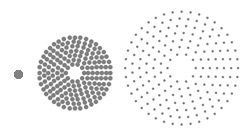Get started with Wolfram technologies, or work with us to apply computational expertise to your projects.
Questions? Comments? Get in touch: 1-800-WOLFRAM, or email us

Geneva, Switzerland—Under the city, 100 meters deep, lies a particle accelerator with a 27-kilometer circumference used to study subatomic particles. By creating collisions at fantastic energies, it is possible to create particles that otherwise occurred only during the violence of the Big Bang.
A successful experiment requires precise control and focusing of relativistic beams. Bruno Autin, a physicist at CERN, used Mathematica to create an optics program to accomplish this delicate, yet complex task.
"Optics calculations involve heavy matrix manipulations and the solving of high-degree algebraic equations. The symbolic algebra capabilities of Mathematica are an ideal tool to calculate optical modules," Autin said.